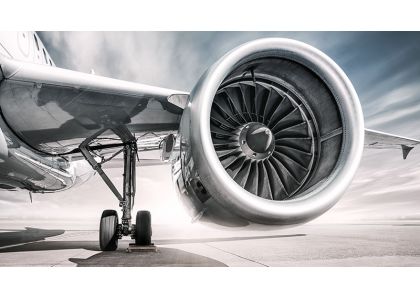INDUSTRY NEWS
Bearings in Aircraft: Ensuring Safe and Efficient Flight

Introduction:
In the realm of aviation, every component plays a crucial role in ensuring safe and efficient flight. Among these components, bearings hold a prominent position due to their vital function in aircraft systems. This article explores the importance, types, challenges, and advancements in aircraft bearings.
Importance of Bearings in Aircraft:
Bearings are mechanical devices that enable rotational or linear movement while reducing friction and enhancing stability. In aircraft, bearings are responsible for supporting various rotating parts, such as engines, propellers, landing gears, and control surfaces. They facilitate smooth and controlled movement, contributing to the overall reliability and performance of the aircraft.
Types of Aircraft Bearings:
1. Ball Bearings:
Ball bearings are the most common type used in aviation. They consist of steel balls separated by a cage, which allows for smooth rolling action. Ball bearings are suitable for high-speed and light-load applications, such as turbine engines and accessory drives.
2. Roller Bearings:
Roller bearings, including cylindrical, tapered, and spherical types, are employed in aircraft where greater load capacity and shock resistance are required. Roller bearings can handle heavy radial and axial loads, often found in landing gears and wing flap systems.
3. Needle Bearings:
Needle bearings are compact and used in areas with limited space. They have a high load-carrying capacity and are commonly employed in control systems, such as ailerons and elevators.
Challenges and Requirements:
Aircraft bearings operate in extreme conditions, including high temperatures, heavy vibrations, and rapid changes in load and speed. Therefore, they must meet stringent requirements for reliability, durability, and weight reduction. Additionally, bearings need to be resistant to corrosion, lubrication loss, and wear and tear to ensure prolonged service life.
Advancements in Aircraft Bearings:
1. Ceramic Bearings:
Ceramic bearings, made from materials like silicon nitride, offer superior strength and reduced weight compared to traditional steel bearings, resulting in enhanced fuel efficiency and performance.
2. Sealed Bearings:
Sealed bearings incorporate advanced sealing technologies to prevent ingress of contaminants and retain lubrication. These bearings ensure longer maintenance intervals and reduced downtime.
3. Integrated Health Monitoring:
Modern aircraft bearings employ sensors and monitoring systems to detect early signs of wear or potential failures. Real-time data analysis allows for predictive maintenance, minimizing the risk of unexpected breakdowns during flights.
Conclusion:
Aircraft bearings are critical components that contribute to the safe and efficient operation of aircraft. Their role in reducing friction, enhancing stability, and enabling controlled movement cannot be understated. With advancements in materials and technologies, aircraft bearings continue to evolve, meeting the demanding requirements of the aviation industry. It is through continuous innovation and improvement that aircraft bearings will further enhance flight safety and efficiency in the years to come.